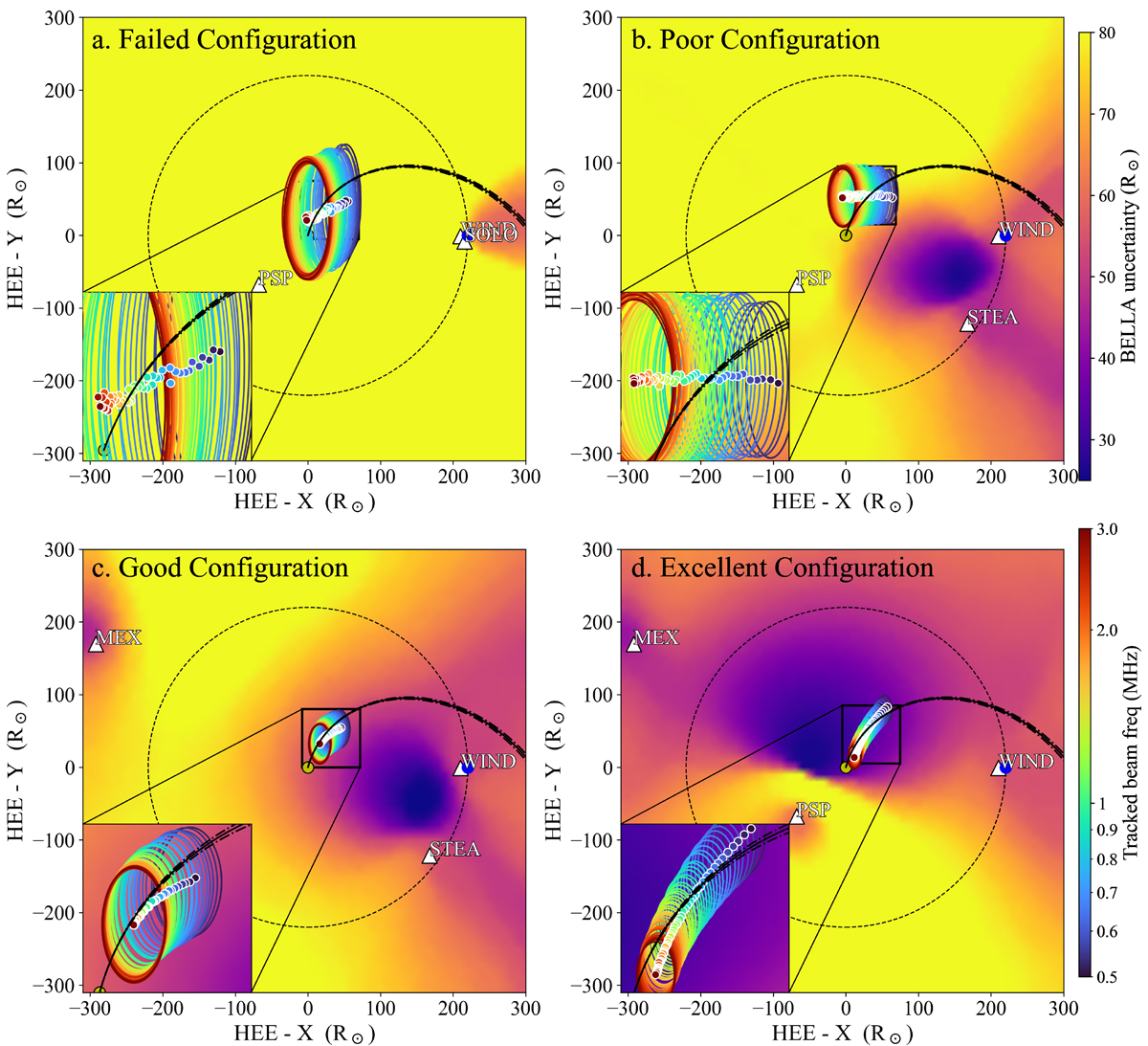Fig. 3.

Download original image
Radio burst source positions obtained by multilaterating different spacecraft configurations using BELLA with three spacecraft. The background maps show regions of low confidence (yellow) and high confidence (blue). Spacecraft configurations for the given event were classified as failed (a), poor (b), good (c), and excellent (d). In rainbow is shown the multilaterated Type IIIs; the centroids are the most probable source location, and the ellipses denote 1σ uncertainty at each corresponding frequency. The accuracy of the multilateration is heavily dependent on the sparsity of the spacecraft. The cadence of the spacecraft will determine the lower uncertainty threshold that is accepted and therefore have an impact on the precision of the positions. A Parker spiral was fitted to the five-spacecraft multilateration shown in Fig. 5 and plotted over all combinations of spacecraft for reference. Assuming this Parker spiral as the ground truth, the spacecraft configuration becomes sparsely distributed around the burst source location, and the results become more accurate and precise.
Current usage metrics show cumulative count of Article Views (full-text article views including HTML views, PDF and ePub downloads, according to the available data) and Abstracts Views on Vision4Press platform.
Data correspond to usage on the plateform after 2015. The current usage metrics is available 48-96 hours after online publication and is updated daily on week days.
Initial download of the metrics may take a while.


